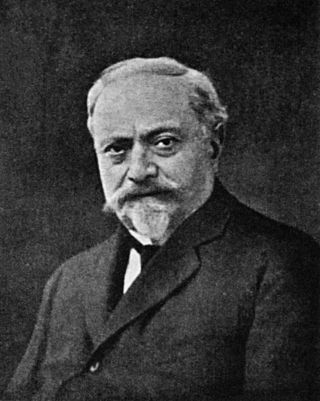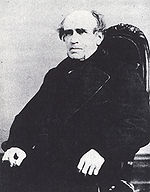
Johann Palisa was an Austrian astronomer, born in Troppau, Austrian Silesia, now Czech Republic. He was a prolific discoverer of asteroids, discovering 122 in all, from 136 Austria in 1874 to 1073 Gellivara in 1923. Some of his notable discoveries include 153 Hilda, 216 Kleopatra, 243 Ida, 253 Mathilde, 324 Bamberga, and the near-Earth asteroid 719 Albert. Palisa made his discoveries without the aid of photography, and he remains the most successful visual (non-photographic) asteroid discoverer of all time. He was awarded the Valz Prize from the French Academy of Sciences in 1906. The asteroid 914 Palisana, discovered by Max Wolf in 1919, and the lunar crater Palisa were named in his honour.
Grigory Nikolayevich Neujmin was a Georgian–Russian astronomer, native of Tbilisi in Georgia, and a discoverer of numerous minor planets as well as 6 periodic and a hyperbolic comet at the Pulkovo and Simeiz Observatories during the first half of the 20th century.

Maximilian Franz Joseph Cornelius Wolf was a German astronomer and a pioneer in the field of astrophotography. He was the chairman of astronomy at the University of Heidelberg and director of the Heidelberg-Königstuhl State Observatory from 1902 until his death in 1932.

Auguste Honoré Charlois was a French astronomer who discovered 99 asteroids while working at the Nice Observatory in southeastern France.
Raymond Smith Dugan was an American astronomer and discoverer of minor planets. His parents were Jeremiah Welby and Mary Evelyn Smith and he was born in Montague in the U.S. state of Massachusetts.

Vincenzo Cerulli was an Italian astronomer and founder of the Collurania-Teramo Observatory in Teramo, central Italy, where he was born.

Carl Gustav Witt was a German astronomer and discoverer of two asteroids who worked at the Berlin Urania Observatory, a popular observatory of the Urania astronomical association of Berlin.
Joel Hastings Metcalf was an American astronomer, humanitarian and minister.
Louis Boyer (1901–1999) was a French astronomer who worked at the Algiers Observatory, North Africa, where he discovered 40 asteroids between 1930 and 1952.
Kōyō Kawanishi is a Japanese dentist, amateur astronomer and discoverer of 13 minor planets.
Makio Akiyama is a Japanese astronomer affiliated with the Susono Observatory (886). He is a discoverer of minor planets, credited by the Minor Planet Center with the discovery of 16 numbered minor planets during 1989–1999.
Vincenzo Silvano Casulli, usually known as Silvano Casulli was an Italian amateur astronomer and a discoverer of minor planets at his Vallemare di Borbona Observatory in Lazio.
Shun-ei Izumikawa is a Japanese astronomer and co-discoverer of 5239 Reiki and 27748 Vivianhoette, two main-belt asteroids he first observed together with astronomer Osamu Muramatsu at the Yatsugatake South Base Observatory (896) near Hokuto, Yamanashi, in 1990 and 1991.
Alfred Schmitt was a French astronomer. Schmitt worked at Algiers Observatory in the 1930s and 1940s and at the Royal Observatory in Uccle, Belgium in the 1950s. From 1955 to 1958 he was also director of the Quito Observatory in Ecuador. He extensively studied minor planets and comets and is credited with having discovered four asteroids.
Petar Đurković was a Serbian astronomer known for discovering two asteroids in 1936 and 1940, respectively. One is named for the Serbian scientist Milutin Milanković, the other for Zvezdara, the hill in Belgrade where the Belgrade Astronomical Observatory is located.

264 Libussa is a Main belt asteroid that was discovered by C. H. F. Peters on December 22, 1886, in Clinton, New York and was named after Libussa, the legendary founder of Prague. It is classified as an S-type asteroid.
Paul Herget was an American astronomer and director of the Cincinnati Observatory, who established the Minor Planet Center after World War II.
Atsushi Takahashi is a Japanese amateur astronomer and discoverer of minor planets.
Tetsuya Fujii is a Japanese amateur astronomer and prolific discoverer of minor planets.
Joseph Rheden was an Austrian astronomer, born in Amlach, East Tyrol, known for his astrographic observations of planets, minor planets and comets, and for the asteroids 744 Aguntina, 771 Libera, and 844 Leontina, which he discovered in 1913 and 1916, respectively.






